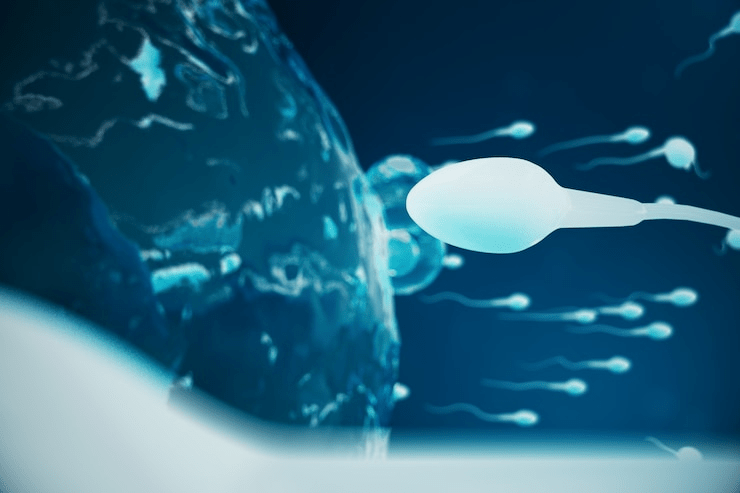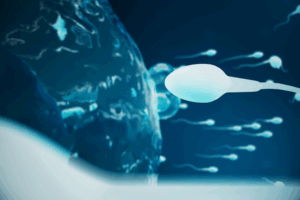
Gene therapy for azoospermia treatment
Introduction Male infertility, especially caused by azoospermia, affects millions of men worldwide. For those suffering from non-obstructive azoospermia, treatment options have been limited. However, thanks

Azoospermia is one of the most challenging causes of male infertility, often leaving men with few options and couples struggling to conceive. But today, an innovative solution for azoospermia is no longer a dream—it’s becoming a reality through groundbreaking medical advancements.
In this comprehensive guide, we’ll explore the causes, traditional treatments, and emerging solutions that are redefining the future for patients with azoospermia. From stem cell therapy to artificial sperm, these innovations offer real hope for those once thought to be infertile.
Azoospermia is a condition where a man’s semen contains no measurable sperm. It affects around 1% of all men and approximately 10–15% of infertile men.
There are two main types:
Obstructive Azoospermia (OA): Sperm production is normal, but a physical blockage prevents sperm from reaching the semen.
Non-Obstructive Azoospermia (NOA): The testicles fail to produce sperm due to hormonal, genetic, or structural issues.
Correct diagnosis is essential before choosing a treatment, and this typically involves:
Semen analysis (multiple times)
Hormonal testing
Genetic evaluation
Testicular biopsy
Understanding the underlying cause is the first step in identifying the right treatment or innovative solution for azoospermia. Common causes include:
Klinefelter Syndrome
Y chromosome microdeletions
Cystic fibrosis gene mutations
Low levels of FSH, LH, or testosterone
Pituitary gland disorders
Congenital absence of the vas deferens
Scarring from infections or surgery
Vasectomy
Radiation or chemotherapy
Exposure to toxic chemicals or heat
Use of anabolic steroids
Smoking and heavy alcohol use
Traditional treatments for azoospermia have included surgery, hormonal therapy, or sperm retrieval combined with assisted reproductive technologies like IVF/ICSI. While useful in many cases, they have limitations:
Limited success rates for non-obstructive azoospermia
High costs of multiple IVF cycles
No sperm found even after TESE in some patients
Dependence on donor sperm as a last resort
That’s why the search for new, innovative solutions for azoospermia is gaining momentum.
Let’s explore the newest frontiers in treating azoospermia, especially non-obstructive types that were previously untreatable.
One of the most exciting innovations is stem cell therapy, which involves turning stem cells into spermatogonial stem cells (SSCs) that can generate sperm.
Scientists extract stem cells, often from bone marrow or adipose tissue.
These cells are reprogrammed and reintroduced into the testes.
Animal studies have shown restored sperm production and fertility.
Though human trials are limited, early-stage studies are promising, offering a powerful and natural fertility solution for NOA patients.
In laboratories, scientists have successfully created sperm-like cells from skin or blood cells using induced pluripotent stem cell (iPSC) technology.
iPSCs are reprogrammed adult cells.
Under lab conditions, they’re transformed into sperm precursors.
The technology aims to help men who produce no sperm at all.
While this method is still under research, it holds the potential to bypass the need for sperm retrieval and create biologically related offspring for azoospermic men.
In cases caused by genetic mutations, such as Y chromosome deletions, CRISPR-Cas9 gene editing is being investigated as a solution.
CRISPR allows scientists to locate and repair faulty genes.
Lab studies on animals have shown corrected spermatogenesis.
In the future, this may allow azoospermic men to produce sperm naturally.
Though still in early development, gene therapy is one of the most precise and innovative solutions for azoospermia.
Exosomes are cell-derived vesicles that play a key role in cell communication. New research suggests they can help:
Reduce inflammation in testicular tissues
Stimulate dormant sperm cells
Support the regeneration of damaged cells
Early clinical studies indicate that testicular exosome injections may rejuvenate sperm production in men with NOA.
In the most futuristic approach, scientists are creating 3D-printed organoids — miniaturized, functional replicas of the testis — using biocompatible materials and patient-derived cells.
These organoids can grow sperm in lab settings
Can be used to study male infertility
May serve as future fertility restoration tools for cancer survivors
This innovation might revolutionize sperm banking and fertility preservation.
India: A 35-year-old man with NOA successfully produced sperm after stem cell therapy and had a child through IVF.
Japan: Researchers created functional sperm from iPSCs in mice, resulting in live births.
USA: A CRISPR trial corrected a Y-chromosome deletion and restored early sperm development in lab-grown testis cells.
Each of these breakthroughs highlights how the innovative solution for azoospermia is becoming a clinical reality.
Many of these treatments are still in experimental or trial phases, but here’s an estimated breakdown of their current cost and accessibility:
| Treatment Type | Estimated Cost (USD) | Availability |
|---|---|---|
| Stem Cell Therapy | $5,000–$25,000 | Limited/Experimental |
| Artificial Sperm (iPSC) | Not available yet | Research Phase |
| Gene Editing (CRISPR) | Not commercially available | Clinical Trials |
| Exosome Therapy | $3,000–$10,000 | Select Clinics |
| 3D Organoid Bioprinting | Not available yet | Laboratory Research |
Check with licensed fertility centers or clinical trial programs if you’re interested in participating or receiving access to these treatments.
While waiting for or undergoing treatment, men can support their fertility health with simple lifestyle changes:
Maintain a healthy weight — obesity can disrupt hormone levels.
Eat a fertility-friendly diet — high in zinc, folic acid, and antioxidants.
Avoid hot environments — limit sauna use and laptop placement on the lap.
Stop smoking and limit alcohol — both reduce sperm quality.
Get enough sleep and reduce stress — chronic stress affects testosterone.
Though lifestyle changes may not cure azoospermia, they can support overall reproductive health and treatment success.
Q1: Is azoospermia curable?
It depends on the cause. Obstructive types can often be surgically corrected. Non-obstructive cases may respond to hormonal therapy or new innovations.
Q2: Can stem cell therapy help with azoospermia?
Yes, early studies show success in restoring sperm production in animals and some human patients. However, more large-scale trials are needed.
Q3: Are there risks to these innovative treatments?
Yes, especially with experimental therapies. Risks include failed outcomes, immune reactions, and unknown long-term effects. Always consult specialists before proceeding.
Q4: How soon will artificial sperm be available for clinical use?
Experts predict another 5–10 years of research is needed before this becomes available for humans.
Azoospermia was once seen as the end of the road for male fertility. Today, however, cutting-edge innovations are rewriting that story. From stem cells and gene editing to lab-grown sperm, we are witnessing a revolution in how azoospermia is understood and treated.
For men affected by this condition, there is real hope, and it lies in the hands of medical science and continued research.
If you’re facing azoospermia, consult a reproductive urologist or fertility specialist to explore your options — both traditional and innovative.
The innovative solution for azoospermia is no longer science fiction. It’s here. It’s evolving. And it might just be your path to parenthood.

Introduction Male infertility, especially caused by azoospermia, affects millions of men worldwide. For those suffering from non-obstructive azoospermia, treatment options have been limited. However, thanks

Azoospermia is one of the most challenging causes of male infertility, often leaving men with few options and couples struggling to conceive. But today, an
PROLISTEM® is a Patented Formula
Copyright © 2025 Prolistem®